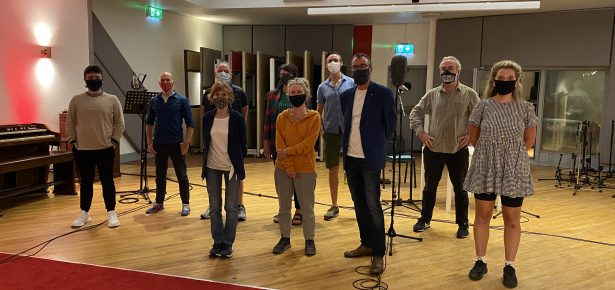
Earlier this year, Graham McLaren and Neil Murray, Directors of Dublin’s Abbey Theatre at the time, invited me to curate a series of audio plays. Like theatres everywhere in the past year, the Abbey was searching for new ways of making theatre in a world without live audiences, and Graham had become fascinated with the possibilities of audio theatre.
As the project took shape, I started to imagine the experience of the audience for this theatre for the ear. I pictured a listener, possibly alone, or with one or two others at most; wearing headphones, the lights turned low. This imagined, unseen auditor started me thinking about the idea of the unseen itself, and of its relationship to the human voice. And so, the Unseen Plays project took shape. It eventually grew to nine plays, involving 78 actors and eight of Ireland’s top directors. We recorded most of them in Dublin’s Windmill Lane Studios (probably better known for its association with U2) over a whirlwind two-week heatwave in the summer of 2021. We would rehearse a play over one day and record it over the following day as the next play went into rehearsal. It was exhausting and exhilarating.
The plays themselves all in some way involved the idea of the unseen in Irish theatre in the twentieth century. Some of the plays by women such as Teresa Deevy, Maura Laverty and Lady Gregory were literally unseen in the sense that they hadn’t been staged for decades, excluded from the canon; others dealt with issues such as institutional abuse that Irish society had chosen not to see, or groups in society who felt invisible. One play dealt with the unseen sources of violence in Northern Ireland, and another, The Pentagonal Dream, was literally unseen since its first production in 1985, to the extent that we had to reconstruct the script from a scratchy VHS recording.
However, the play I always knew would be part of the series was W.B. Yeats’s The Words Upon the Window-Pane, first staged in 1930. As I was curating the Unseen Plays, I was just completing my book on Yeats’s theatre for Cambridge: Yeats on Theatre. When writing the book, I had become fascinated with the ways in which Yeats’s personal belief in spirits – in the unseen – was the foundation for his work in the theatre. The Words Upon the Window-Pane is some respects a simple play: basically, a group of characters (effectively an onstage audience) gather in a room for a séance, at which the tormented spirit of Jonathan Swift appears, speaking through the medium.
Later, as I listened back to Yeats’s play as theatre for the ear, I again imagined the listener, alone with voices in the dark, and wondered if all theatre is not, at some level, a form of séance; and, if so, maybe that is part of what makes us long for the theatres to reopen, so we can once again gather together in darkened rooms where the unseen becomes present.
Yeats on Theatre is published by Cambridge University Press on August 15, 2021
Unseen Plays are streamed on the Abbey Theatre website from November, 2021: https://www.abbeytheatre.ie/whats-on/
Chris Morash
August 6, 2021
PHOTO CAPTION: The masked cast of Yeats’s Words Upon the Window-Pane and Lady Gregory’s The Image in Windmill Lane Studios, July 2021. From left (back row): Ian O’Reilly, Bryan Burroughs, Don Wycherley, Marcus Lamb, Declan Conlon, Fionnuala Gygax; (front row, from left): Máire Ní Ghráinne, Sarah-Jane Scaife (director) and Chris Morash. Missing is Helen Norton. Photo: Roxzan Bowes.
Latest Comments
Have your say!